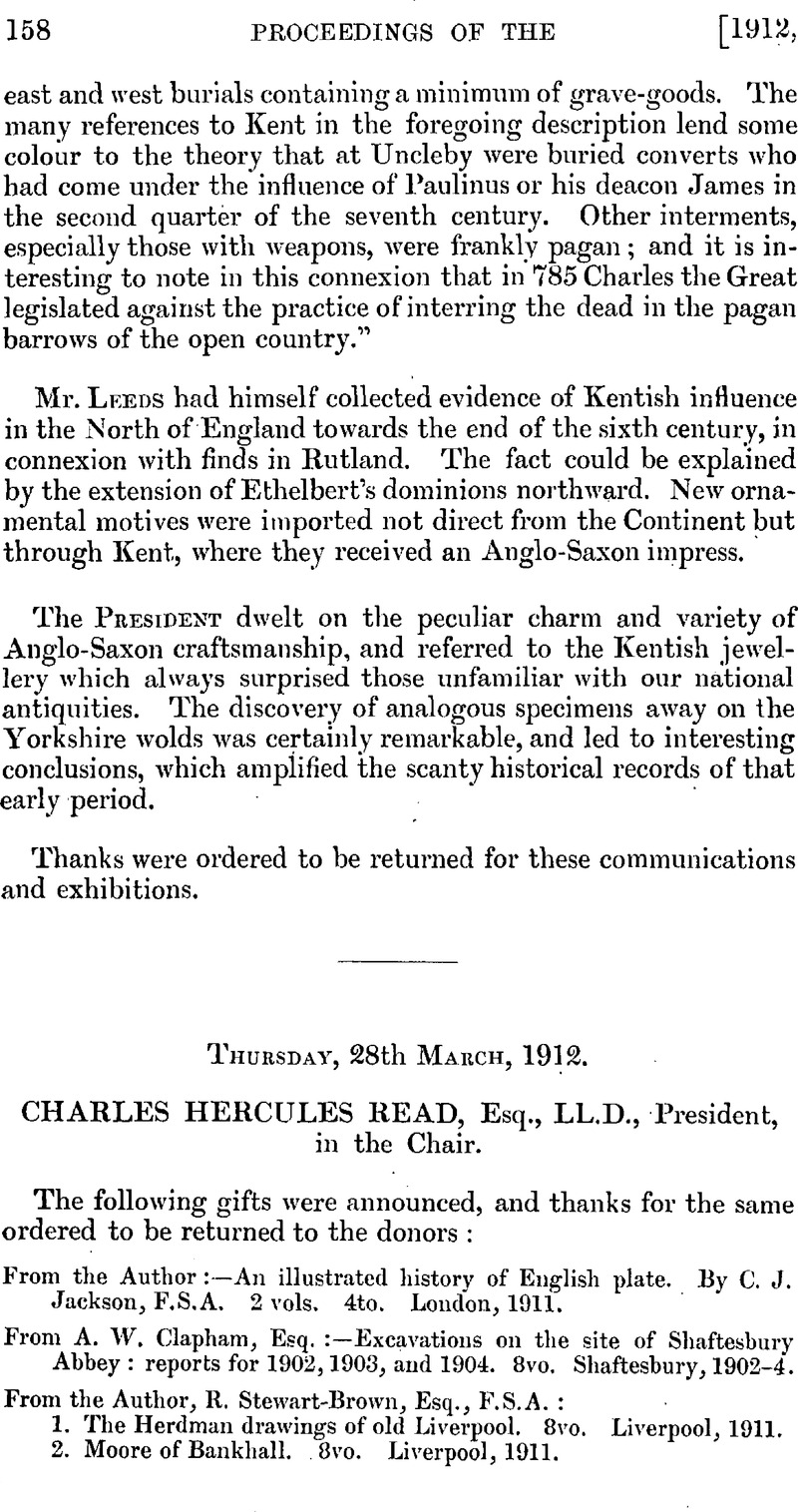No CrossRef data available.
Published online by Cambridge University Press: 10 May 2010

page 159 note 1 It bore on a flyleaf the inscription : ‘Erkine (sic) Knollys, from his friend William Adams, Novr 16th, 1837. Merton.’
page 161 note 1 The writer desires to acknowledge his indebtedness to Mr. Maclagan's transcript and to Mr. Dyson Perrins for his courteous permission to make use of it. The rubrics are here printed in italics.
page 167 note 1 Recalling the Gaulish leg-wear.
page 168 note 1 Mr. Maclagan suggests St. Benedict.
page 169 note 1 Reproduced by the writer, from a photograph, in Surrey Archaeological Collections, vol. xxiv, p. 78.
page 175 note 1 See Tiraboschi, Notizie dei Pittori, Scultori, Incisori, Architetti, etc., natii … (in) Modena. Modena, 1786.
page 178 note 1 See an article in the Archaeological Journal (vol. li, 1894) by Mr. Alfred Higgins, F.S.A., and Early Renaissance Architecture in England, by Mr. J. A. Gotch, F.S.A.
page 179 note 1 I am compelled to reject the explanation given in Archaeologia, vol. xxxix, that these puppets were ‘crucifixes and madonnas’.
page 183 note 1 The Loseley Manuscripts, p. 81. A. J. Kempe. Murray, London, 1836.
page 185 note 1 Edition of 1878–85, vol. vi, p. 481.
page 185 note 2 Vol. vii, p. 410.
page 187 note 1 Les Comptes des Bâtiments. Edited by L. E. S. J. de Laborde, 1877–80.
page 190 note 1 On the subject of Niccolò da Modena I have received, since this paper was in the hands of the printers, a most interesting letter from M. Louis Dimier. The letter is too long to be quoted in full, but I must confess that his arguments in favour of a separate identity for Niccolò da Modena and Niccolò dell'Abbate appear wellnigh unanswerable.
page 191 note 1 Notizie dei Professori del Disegno nella Liguria, vol. iv, p. 286.
page 193 note 1 He is described in the Denunzia as ‘Giovanni, figlio di detto Giovanni detà dani 1½’. Gaye, Carleggio, vol. i, no. cxiii.
page 194 note 1 For a full account of this work and a conjectural reconstruction of the same see the Archaeological Journal, loc. cit.
page 195 note 1 Petrarch, Sonnet No. VII, uses the word in its proper sense :—
‘Onde è dal corso quasi smarrita
Nostra natura, vinta dal costume’ …
page 197 note 1 It does not appear that the word ‘injungiere’ can be considered equivalent to ‘ingegnere’, as Mr. Higgins (Archaeological Journal, loc. cit.) assumes : not only would there be more scope for joiners in a work of this nature than for engineers, but the word is clearly a derivative from the verb ‘giungere’, to join.
page 198 note 1 Letters and Papers of Henry VIII, vol. vi, no. 1381.
page 201 note 1 Lettere di Pietro Aretino, vol. ii, p. 175. Paris, 1609.